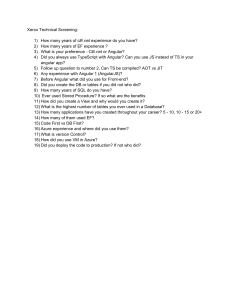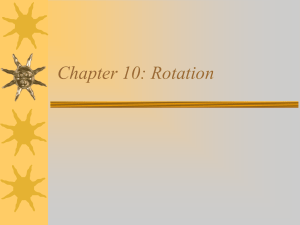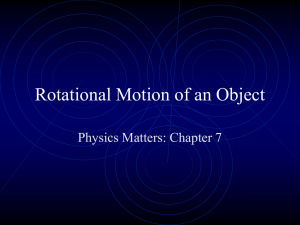Types of Motion Linear motion: Examples:
advertisement
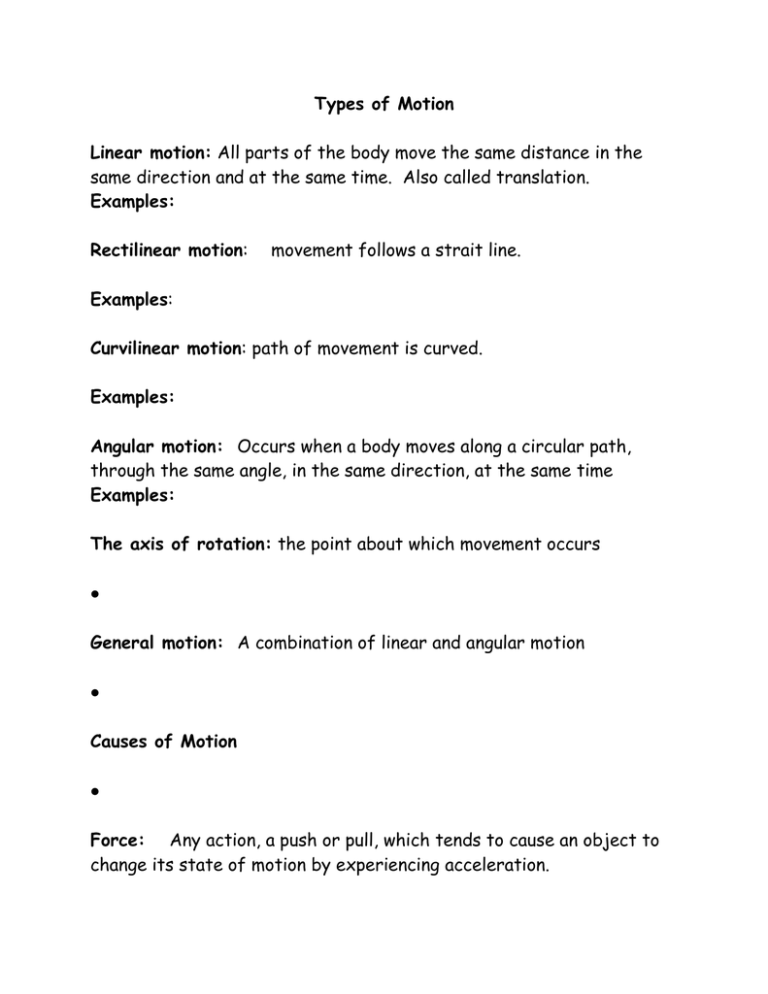
Types of Motion Linear motion: All parts of the body move the same distance in the same direction and at the same time. Also called translation. Examples: Rectilinear motion: movement follows a strait line. Examples: Curvilinear motion: path of movement is curved. Examples: Angular motion: Occurs when a body moves along a circular path, through the same angle, in the same direction, at the same time Examples: The axis of rotation: the point about which movement occurs General motion: A combination of linear and angular motion Causes of Motion Force: Any action, a push or pull, which tends to cause an object to change its state of motion by experiencing acceleration. Constant Velocity: Occurs when an object is not accelerating Linear Motion: Caused by forces which act through a body’s centre of mass Examples: Angular motion: Caused by forces that do not go through the centre of mass. Force causes object to rotate about an axis. Examples: Moment of Force: The effect of a force causing angular motion. Also called torque. Examples: Two factors affect moment of force 1. moment arm: distance from axis of rotation to point of force generation 2. magnitude of force Moment of Force = Moment Arm + Force
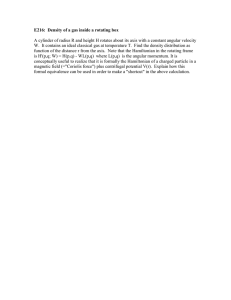
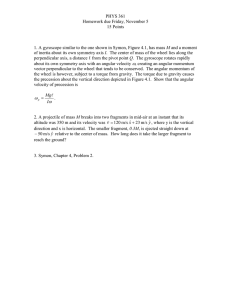
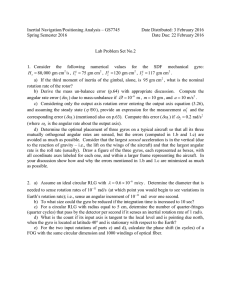
![[MATH2019] Final exam notes](http://s3.studylib.net/store/data/025296565_1-0d5b41f3ef39ac8ec6df0bd44c901026-300x300.png)
